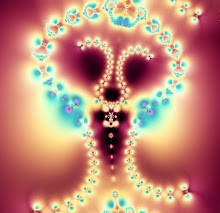It is a thin-leaved deciduous hardwood tree in the family Betulaceae, which also includes alders, hazels, and hornbeams. It is closely related to the beech-oak family Fagaceae. The genus Betula contains 30 to 60 known taxa of which 11 are on the IUCN 2011 Red List of Threatened Species. They are a typically rather short-lived pioneer species widespread in the Northern Hemisphere, particularly in northern areas of temperate climates and in boreal climates.
The bark of all birches is characteristically marked with long, horizontal lenticels, and often separates into thin, papery plates, especially upon the paper birch. Distinctive colors give the common names gray, white, black, silver and yellow birch to different species.
The buds, forming early and full-grown by midsummer, are all lateral, without a terminal bud forming; the branch is prolonged by the upper lateral bud. The wood of all the species is close-grained with a satiny texture and capable of taking a fine polish; its fuel value is fair.
Flower and fruit
The flowers are monoecious, opening with or before the leaves. Once fully grown, these leaves are usually 3–6 millimetres long on three-flowered clusters in the axils of the scales of drooping or erect catkins or aments. Staminate catkins are pendulous, clustered, or solitary in the axils of the last leaves of the branch of the year or near the ends of the short lateral branchlets of the year. They form in early autumn and remain rigid during the winter. The scales of the mature staminate catkins are broadly ovate, rounded, yellow or orange color below the middle, and dark chestnut brown at apex. Each scale bears two bractlets and three sterile flowers, each flower consisting of a sessile, membranous, usually two-lobed, calyx. Each calyx bears four short filaments with one-celled anthers or strictly, two filaments divided into two branches, each bearing a half-anther. Anther cells open longitudinally. The pistillate segments are erect or pendulous, and solitary, terminal on the two-leaved lateral spur-like branchlets of the year. The pistillate scales are oblong-ovate, three-lobed, pale yellow-green often tinged with red, becoming brown at maturity. These scales bear two or three fertile flowers, each flower consisting of a naked ovary. The ovary is compressed, two-celled, and crowned with two slender styles; the ovule is solitary. Each scale bears a single small, winged nut that is oval, with two persistent
Medical
Approved topical medicine
In the European Union, a prescription gel containing birch bark extract (commercial name Episalvan, betulae cortex dry extract (5-10 : 1); extraction solvent: n-heptane 95% (w/w)) was approved in 2016 for the topical treatment of minor skin wounds in adults. Although its mechanism of action in helping to heal injured skin is not fully understood, birch bark extract appears to stimulate the growth of keratinocytes which then fill the wound.
Research and traditional medicine
Preliminary research indicates that the phytochemicals, betulin and possibly other triterpenes, are active in Episalvan gel and wound healing properties of birch bark.
Over centuries, birch bark was used in traditional medicine practices by North American indigenous people for treating superficial wounds by applying bark directly to the skin. Splints made with birch bark were used as casts for broken limbs in the 16th century.











0 Comments:
Post a Comment